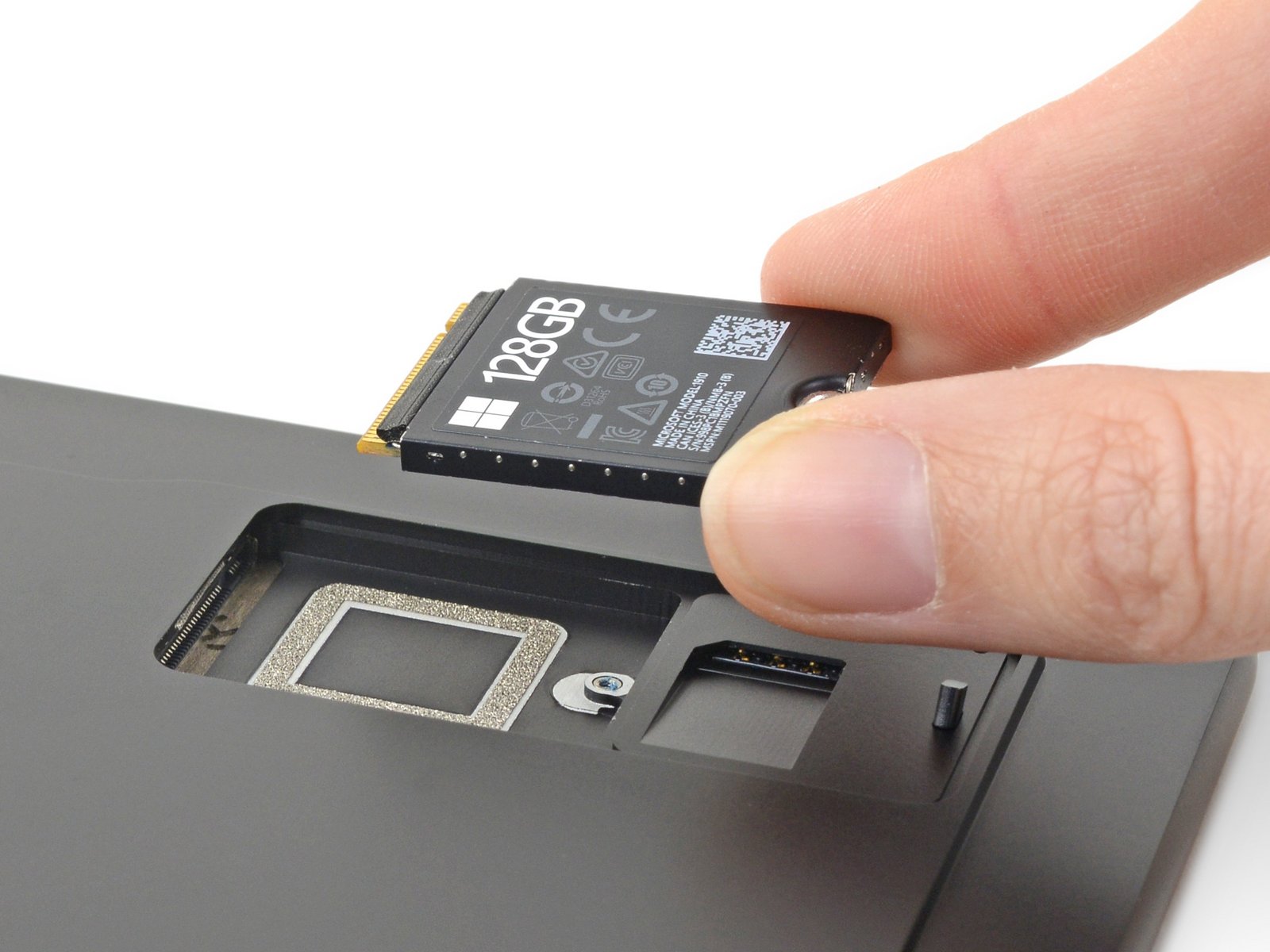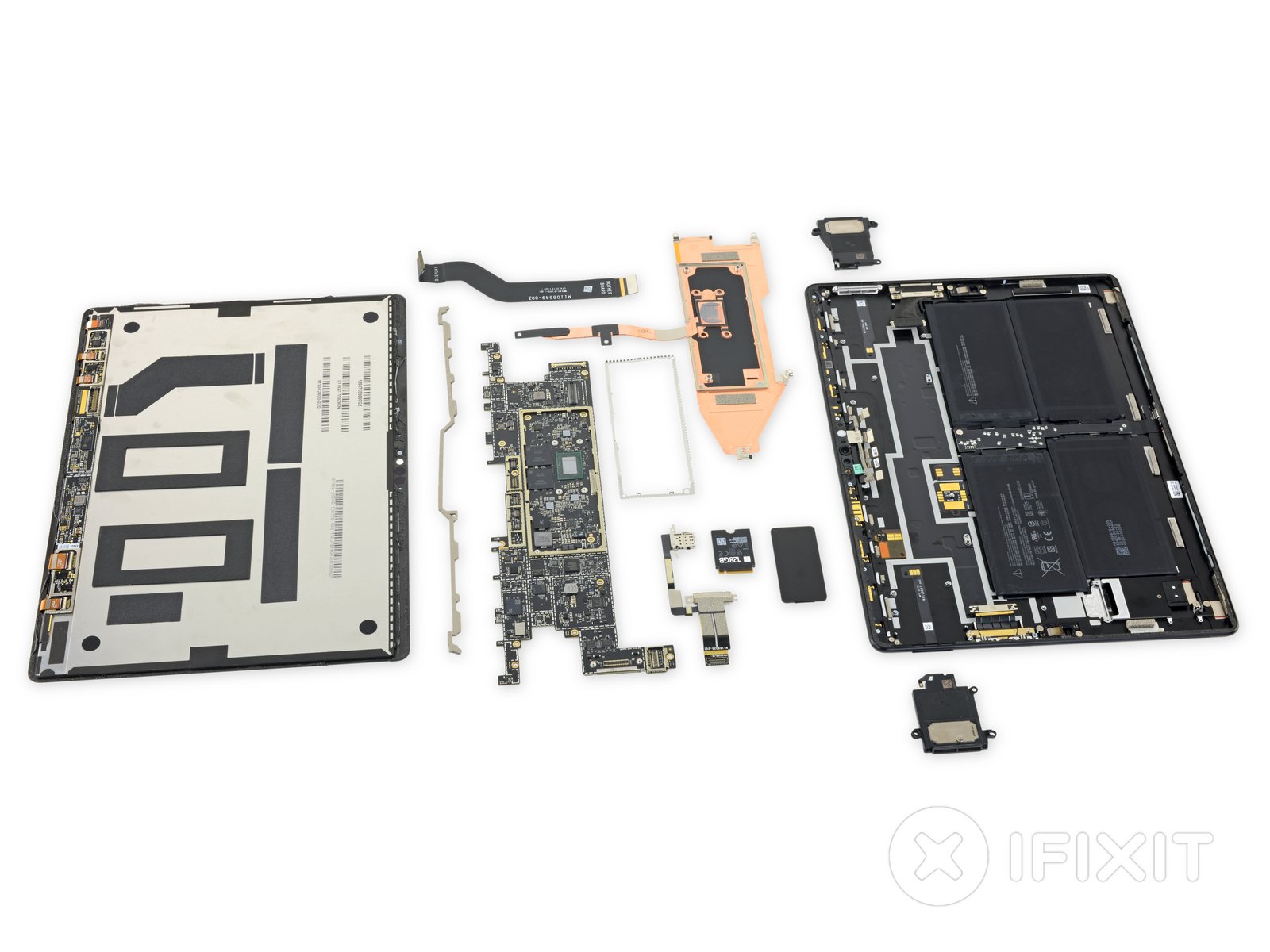The company made a big deal over its improvements to the Surface Laptop 3 to make it more serviceable, including a removable SSD and modular, easier-to-access components – all without compromising the external design. For reference, the Surface Laptop and Surface Laptop 2 were notoriously awful to repair. Turns out the company didn’t stop there. The wonderful folks at iFixit decided to tear down the new Surface Pro X and found it might very well be the most repairable popular tablet ever. There are a few notable tidbits here. For one, the SSD drive – one of the most critical components for repair – is remarkably easy to access. It’s hidden right under the kickstand, beneath a magnetic trap door you can access by poking with a SIM tool or other thin object. Clever design and repairability? Who’da thunk it?! Credit: iFixit The display, while still secured with an adhesive, uses a simple foam adhessive that’s easy to cut into and comes right off with a bit of suction. This is a big deal, considering the goopy, heat-based stuff generally seen on our touchscreen devices, which make for a painful repair process and a high chance of damaging the screen. As per iFixit’s description, they performed a celebratory dance when they saw how easy it was to get into the unit. The rest of the tablet mostly uses standard Torx screws affixed to various modules – it means it’s easy to swap out specific parts for repair. The one sour spot is the battery, which is still attached to the frame with ungodly heavy-duty glue. In all, the device scores a 6/10 on the iFixit’s repairability scorechart. That doesn’t sound like much until you consider the Surface Pro 6, iPad, and iPad Pro, score a 1, 2, and 3, respectively. Heck, it’s better than an iMac, which also scores a 3. Credit: iFixit Mind you, “most repairable tablet” isn’t exactly a high bar to clear, but it’s a welcome shift for an industry that’s prioritized aesthetics and minimalism over user-friendliness and longevity. If you don’t see what’s so exciting about more repairable devices, it’s likely because we’ve started taking for granted that someone else will fix our devices for us. The fact that devices need to be shipped back to the manufacturer or taken to a specialized repair shop is an unfortunate consequence of our addiction to slim, tiny gadgets. Let’s hope Microsoft and other keep up this trend and innovate in a way that genuinely returns value to the consumer.

